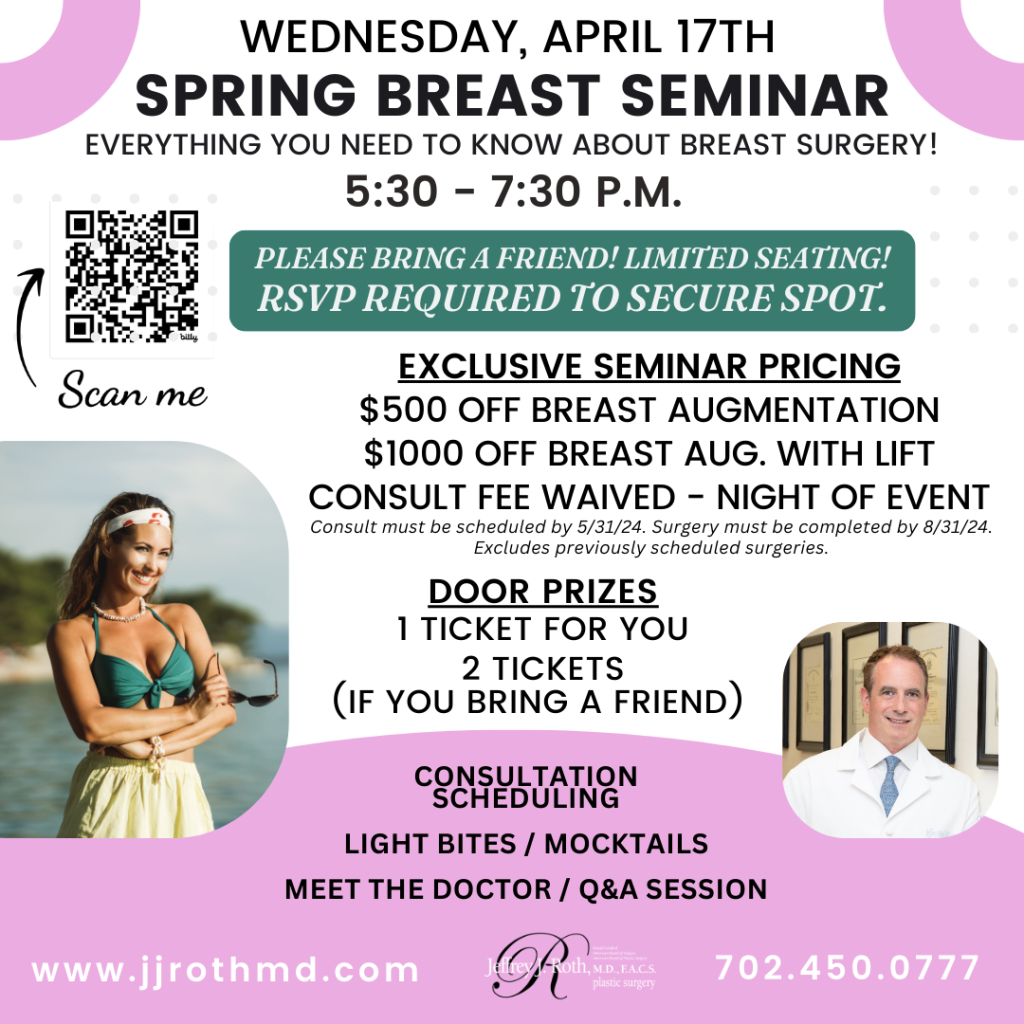Las Vegas Plastic Surgery
This is one of my favorite questions. The word “plastic” derives from the Greek plastikos, meaning, to mold or to form. Carl Ferdinand Von Graefe coined the term Plastic Surgery in Germany in 1818. Plastic Surgeons reform or reshape tissue, and have done so for thousands of years before the moldable plastic material that we see all around us was invented.
Plastic Surgery is defined as the surgical specialty or procedure concerned with the restoration, construction, reconstruction, or improvement in the form, function, and appearance of body structures that are missing, defective, damaged, or misshapen. It encompasses both reconstructive and aesthetic surgery.
A Brief History:
Plastic Surgery has been around for 2000 years before Christ, where surgeons in India were doing reconstructive surgeries. This was for a variety of reasons. Commonly, when one was caught stealing in ancient India, they cut off the offenders nose and put him in prison. Once released, people wanted a nose back. The ancient Indian Surgeons rotated tissue and filled in the defect. In this case, Sushruta is considered to be the Father of Surgery, and was performing Plastic Surgery in 6th century B.C. His works mentioned many plastic surgical procedures.
Ancient Egyptians and Romans also performed Plastic Surgical procedures.
The first American Plastic Surgeon was John Peter Mettauer, who in 1827 performed the first cleft palate operation with instruments that he designed himself.
The specialty advanced rapidly in the 20th century. Anesthesia techniques became better. Two World Wars provided unfortunate opportunity for the creation and refinement of reconstructive techniques. Joseph Murray, a plastic surgeon, performed the first successful transplant, (a kidney transplant between identical twins), in 1954. It was successful because no immunosuppression was necessary in genetically identical twins.
There are many aspects of Plastic Surgery.
Reconstructive Surgery is performed to correct functional impairments caused by; burns, trauma, (i.e. facial bone fractures), congenital abnormalities, developmental abnormalities, tumor, infection or other disease. Microsurgery, Craniofacial Surgery, Hand Surgery, Pediatric Surgery are all disciplines of Reconstructive Plastic Surgery. Surgery is usually performed to improve function, but it can also be done to approximate a normal appearance.
Cosmetic and Aesthetic Surgery involves techniques intended for enhancement of appearance. It is also involved with maintaining normal appearance, restoring it, or enhancing it.
Knowledge of Reconstructive and Aesthetic techniques cross applies. For example, when confronted with a traumatic nose injury, the first priority is function, but if given the opportunity, aesthetic form can be taken into consideration as well, for the best long term result for the patient.
Plastic Surgery It is a never ending quest for the best technique, materials, and support for the patient. I had a Professor once tell me, “If you get bored in Plastic Surgery, you are not reading enough.” There is always something new, even if the specialty’s history is long…
Jeffrey J. Roth, M.D., F.A.C.S.
(702) 450-0777www.jjrothmd.com
References:
American Society of Plastic Surgeons.
https://www.plasticsurgery.org/Patients_and_Consumers/The_Story_of_Plastic_Surgery.html
American Board of Plastic Surgery.
https://www.abplsurg.org/ModDefault.aspx?section=AboutDPS
Stedman’s Medical Dictionary. Stedman’s Medical Dictionary 28th Edition, Copyright© 2006_Lippincott Williams & Wilkins.



